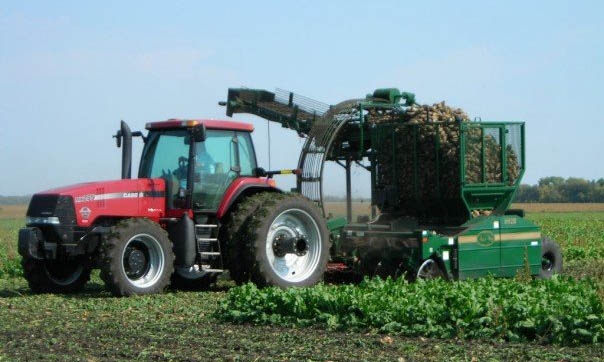October 8, 2010

Last week, American Crystal Sugar Co. informed its growers that they will be allowed to deliver sugar beets to the plant for processing from only 70 percent of their acreage. While American Crystal strived to match potential production in the Red River Valley with final demand, excellent growing conditions throughout the season resulted in higher than expected sugar beet yields.
Leaving unharvested sugar beets in the field represents a significant loss to producers because growers have made a considerable investment in seed, fertilizer, pesticides and fuel that they will not receive back in income for their beets. Even though farmers eventually may deliver total tonnage that is on par with past years, albeit from fewer acres, it is difficult for farmers psychologically to not harvest high-quality beets.
Green Vision Group, Heartland Renewable and I have been working to establish an energy beet-to-biofuel industry across North Dakota. This begs the question of how much biofuel could have been produced from all of the sugar beets that will remain unharvested.
Using five-year acreage and yield averages from 2005 through 2009 from the North Dakota Agricultural Statistics Service, beet producers plant an average of 240,000 acres of sugar beets each year. During the past five years, yields have averaged 23.2 tons per acre. This would mean a total of 1.67 million tons of sugar beets if 30 percent of this average production were available for biofuel.
The next step to determining the total biofuel available is to multiply available beets by the expected quantity of biofuel obtained from each ton. Our preliminary research suggests that 26.5 gallons of ethanol can be produced from each ton of sugar beets. Multiplying this conversion rate by the total tonnage of unharvested sugar beets results in 44.2 million gallons of ethanol not produced.
To put this in context, North Dakota consumed 365 million gallons of gasoline in 2008, according to the U.S. Department of Energy. Consequently, biofuel from unharvested beets could displace more than 12 percent of the state’s current demand.
When we hold educational meetings for our energy beet-to-biofuel project, the suggestion to use unharvested sugar beets typically comes up. However, the concept really isn’t commercially feasible. A new commercial plant can’t sustain itself based on the expectation that there always will be unharvested beets available.
Unharvested beets are a large cost to farm producers. Sugar beet companies eventually will scale back acreage to bring production in line with market demand whenever the surplus of beets becomes too large.
Unexpectedly favorable growing conditions have resulted in wonderful sugar beet crops in the state during the past few years. While excess production can’t sustain a new energy beet-to-biofuel plant, it is a testament to the comparative advantage such a plant would enjoy in the energy industry.
You May Also Like




